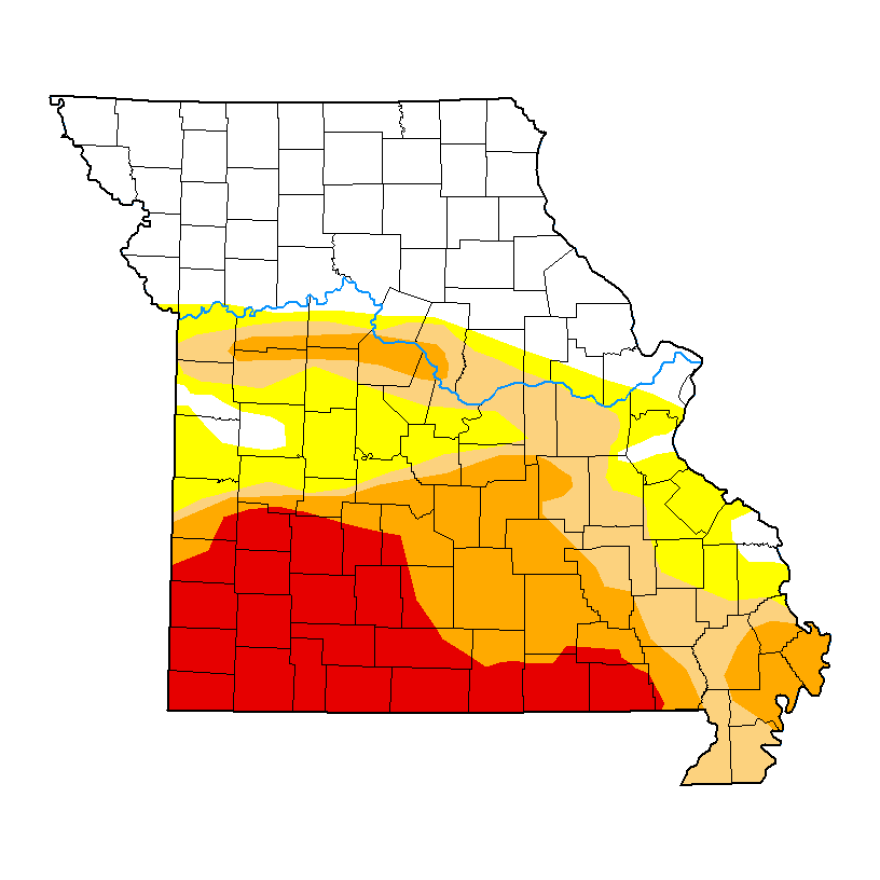By the end of last month, the southwest corner of the Missouri lit up bright-red on the U.S. Drought Monitor. That means our drought is extreme — and water watches and emergency conservation plans could be coming soon from Springfield City Utilities.
Steve Stodden is CU’s chief natural gas and water operations officer. Last week, he updated the public utility board on how CU plans for drought emergencies.
“There’s basically kind of five different phases to our water conservation plan: There’s a water watch, a water warning, and then three stages of conservation,” Stodden said.
Based on water storage concerns, the president of the utility can call a water watch. In that case, CU asks Springfield-area residents to cut back on water use where they can. For example, residents are asked to water their lawns on different days of the week based on whether their house address is an even or an odd number.
CU can call a water warning, designed to re-emphasize the seriousness of the situation, if lake level water storage falls below 65 percent. The warning has the same requirements and requests as the water watch.
If water storage levels continue to fall, CU can call a water shortage, a water emergency or a water crisis. Each level of alert has stronger water restrictions designed to lower water demand to safe levels.
“Each one gets more impactful on our community. You know, we do everything we can do not to get into these and to try and get the message out there,” Stodden said.
Water shortage
- First of three stages of CU water conservation measures
- Enacted when water storage levels lower to 60 percent of capacity
- Goal is to cut water demand by 15 percent
- No washing of driveways, parking lots, etc.
- Restricted times for filling residential swimming pools
- Restricted times for washing of non-commercial vehicles
- No water for dust control
- Restricted lawn irrigation to one day per week
- Water served at restaurants only upon request
Water emergency
- Enacted when water storage levels are less than 55 percent
- Goal is to cut water demand by 20 percent
- Eliminates irrigation of lawns
- Eliminates filling of residential swimming pools
- Eliminates recreational water use — no slip-n-slides, for example
- Eliminates noncommercial washing of vehicles — car washes stay open, but residents may not wash cars at home
Water crisis
- Enacted when water storage is less than 50 percent
- Goal is to cut water demand by 25 percent
- Prohibits all washing of vehicles — car washes closed
- Prohibits all watering of landscaping and lawns
- Prohibits filling of all pools
- Prohibits any new or expanded water service connections
- Customers who consume more than their average winter water use are subject to a surcharge, the "Emergency Conservation Water Service Rate"
- Water usage from fire hydrants limited to usage for human consumption, necessary watering for animals, or fire safety purposes.
"At that point, we're considering it critical," Stodden told the public utility board. But Stodden said Springfield's current water storage level was around 88 percent at the end of July. Stodden said the last time Springfield faced a water watch was in 2012, and the community responded very well.



